Articles of 2006
Is Miguel Cotto still destiny’s child?
With weeks to go and Roberto Duran having relocated his exotic training camps to whatever fight venue he was to defend his legendary championship prestige at, cigar chomping trainer Freddie Brown knew the critical phase of his work was really about to begin. Getting Duran through the disciplined rigors of a training camp demanded expertise in security, clinical psychology and an iron hand in a velvet glove. Brown knew the intricate matters of the mind under duress as well as how to parry a jab angling the body beyond counter shots and all things done elementary to do with bringing harm to an opposing boxer.
If ever there was a 24/7 problem child as barer of fistic genius, it was Duran!
Beating out staccato rhythms on his bongos was Duran’s idea of congeniality for photographers. Mostly, Duran was a late night campaigner, only buckling down a few weeks before his fights. Such was his woman hunting carnality, dance club vitality and his sheer love for spontaneous indulgence, calorie counting being damned. His idea of task orientated concentration manifest itself as pure exhibitionism – the Panamanian a riotous vaudevillian, jumping rope in a crouch, hitting the speed bag with his hands then his forehead, kissing babies only to fondle the mothers. When it came to sparring, however, Duran punished any hint of impudence in his paid-for-drubbing sparring mates, as if they were headlining contracted opponents. This was before the mid-1980s and gripping middle age infirmities and wrestling with Mickey Rourke made him look grotesquely yesterday’s man.
Swathed in Vaseline, the still blushing Duran’s logic was instinctive. “Whenever you get in the ring with me you are fighting Roberto Duran.”
Ever attendant, Freddie Brown hovered, squinting and whispering in the champion’s ear, guiding and suggesting defensive postures or gruffly reminding Duran of his unofficial office as boxing immortal, commanding or challenging him to work till exhaustion intervened. Awake before Duran, Brown would enter Duran’s hotel room and shake the bed, scrape the French fries off the Panamanian’s dinner plate or with a scowl reroute troublesome groupies, ever stoned and at the ready to party, intent on spending more of Duran’s very hard-earned money. If the elegant Ray Arcel kept the diamond talents of Duran polished to a glorious luster for macho punching displays against Vilomar Fernandez, Esteban DeJesus, Carlos Palomino and Sugar Ray Leonard, it was Brown who walked by his side, reintroducing the virtues of key fundamentals, devoted to keeping Duran from ultimate harm, from Duran eating himself alive.
* * *
Unlike Duran or fellow Puerto Rican greats Wilfredo Benitez or Edwin Rosario, Miguel Cotto has not shown himself to be a detriment to his own best interests. He may enjoy home cooking more than he should, but that’s been proven a reversible passion by fighters for ages, most recently by Ricky Hatton and Acelino Freitas, to name but two. Cotto puts in his road work, spars with concentrated fervor, generally applying himself to whatever his trainer/father directs. Perhaps, only genetics now determines that Cotto must struggle to remain at 140 and yet there are major incentives for him to do so, at least for a while longer; one is named Jose Luis Castillo, another Arturo Gatti and another Ricky Hatton. Those are just some of the essential names. Cotto’s promotional house, Top Rank, fully understands that their Puerto Rican star in the making literally has the world at his feet. Perhaps, we should say, all things are possible in the calculated future concerning Miguel Cotto.
And therein lays Cotto’s big concern. Somewhere along the way, during the drive to make Cotto boxing’s next big Puerto Rican superstar – yes, very definitely in the mold of Felix Trinidad, circa 1993 – well, Cotto’s future significance seemed to stall on the runway. Remaining undefeated has not exonerated him from critical scrutiny. His fan base has not materialized as a crossover demographic. His quotient of can’t-miss-anticipation was shaken by the fists of fighters as speculative as “Chop Chop” Corley and Lovemore N’dou. Never mind the circumstances, the home court advantage Cotto had fighting at the Rodriquez Coliseum in Puerto Rico, Cotto was being blitzed by winging hooks by both fighters. Punches that solid prospects with ten fights could have defensively picked off repeatedly hammered the next big thing at welterweight. We restate, for the record, Cotto came back to win and remain undefeated. He’s shown a warrior’s heart, if not always a champion’s intellect.
But just where in his boxing does the uniqueness manifest itself?
The net effect of Cotto at times struggling instead of dominating on his WBO title run of HBO televised outings has put a hush over the exuberance to do with his arrival at the top of the boxing ladder. Knockout wins are expected and yet when realized coming with a sense of relief. So, now the question defining him as a champion remains: Just how good is Miguel Cotto? To do with matters of strategic necessity, that question has taken on a contextualizing presence. In a way, it normalizes Cotto for fellow championship fighters from Castillo to Hatton to Margarito and beyond. They all have expressed a desire to take a shot at Cotto, not in Puerto Rico, but live on HBO, for they think there is glory to be grabbed.
The developing and promoting of Miguel Cotto has become something of a balancing act. Bob Arum and Top Rank have never wavered in their public assertion of confidence in Cotto’s ring abilities and his ultimate realization of pay-per-view outings. Many boxing insiders have been just as vocal in expressing the opinion that Cotto needs a top flight trainer, the mentoring phase with his father from rank amateur to Olympian and WBO titlist is now viewed as being tapped out, a phase completed. Team Cotto have an admission of limitation to internalize and an outreach to make happen.
As for US based cable giants HBO, they have factored Cotto as a prominent championship presence in the post-Felix Trinidad, post-Roy Jones, post-Evander Holyfield and Lennox Lewis eras, with only a brief De La Hoya resurgence sustaining this classic generation of pay-per-view giants. Four years ago, Cotto was thought to be the natural replacement idol for Trinidad. And as Cotto begins to move through the final developmental phase of his maturing career, Team Cotto and Top Rank sign him to fight Paul Malignaggi, a young willow-the-wisp, dart and dash boxer who runs and guns to the frustration of his astonished opponents. Perhaps, the true winner of this fight was rival promoter Lou DiBella who somehow courted and secured this fight for the troublesome Malignaggi. By troublesome we mean a guy who entertains with pace not power, who contorts and avoids to counter and confound at alarming speed. So with a massive fight looming with Jose Luis Castillo in the fall why take on a Willie Pep clone, a guy with a rabid fan base in the Eastern US?
It seems Cotto is finally being asked to grow up and find ways to win difficult fights. Undoubtedly, Cotto’s going to have to leave the comfort of his economically paced power boxing at times against Malignaggi and fight with interpretive hunger, not just driving selectivity. Simple flourishes of body shots mixed in with left hooking dingers will not be enough. One might say Cotto has been asked to prove his merit and the sustain hype that’s accompanied him since he turned professional. Being the heir to the mantle of the great Felix Trinidad only gets harder, requiring a fighter to produce tidal waves of excellence at conspicuous moments, such as fighting the popular Paul Malignaggi with everything expected on the line.
Championship boxing careers come down to nexus points of defining criticality. A fight against the talented Malignaggi is precisely the kind of fight that a young Felix Trinidad would have turned into a theatre of self-glorification. Trinidad would have left no doubts. Of course, that’s what legends in the making do; they turn expectation into inevitability, the energized bodies and expansive dreams of their rivals falling by the wayside, falling into trivial facets of history.
Cotto must feel like he’s been on this hump before, being asked to prove himself yet again, the hurdle before him having been raised. So where does the crucible end? Just what exacting balance of idealized weight, technical facility, endured experience and engrained confidence will be enough? Why doesn’t it yet feel to him like he’s in the zone, all things realizing the best of an imaginable self? When will opponents and their torturing challenges be erased by his best boxing?
* * *
Duran would know most of the answers. He heard Freddie Brown tell him often enough, “If you let the questions get into your head, you’re done.” So Duran just ignored him when he could and went back to the excruciating rigors of trying to look like Roberto Duran, yet again.
Patrick Kehoe may be reached at pkehoe@telus.net
-
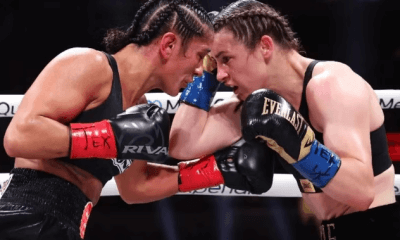
 Featured Articles3 weeks ago
Featured Articles3 weeks agoResults and Recaps from New York Where Taylor Edged Serrano Once Again
-

 Featured Articles1 week ago
Featured Articles1 week agoThe Hauser Report: Zayas-Garcia, Pacquiao, Usyk, and the NYSAC
-

 Featured Articles2 days ago
Featured Articles2 days agoOscar Duarte and Regis Prograis Prevail on an Action-Packed Fight Card in Chicago
-
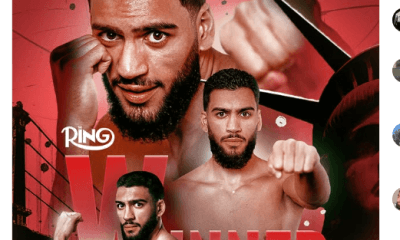
 Featured Articles3 weeks ago
Featured Articles3 weeks agoResults and Recaps from NYC where Hamzah Sheeraz was Spectacular
-
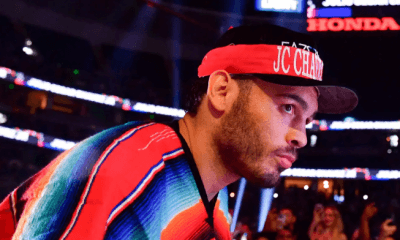
 Featured Articles4 weeks ago
Featured Articles4 weeks agoFrom a Sympathetic Figure to a Pariah: The Travails of Julio Cesar Chavez Jr
-
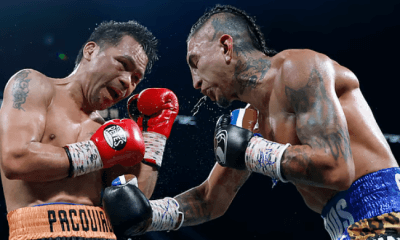
 Featured Articles2 weeks ago
Featured Articles2 weeks agoManny Pacquiao and Mario Barrios Fight to a Draw; Fundora stops Tim Tszyu
-
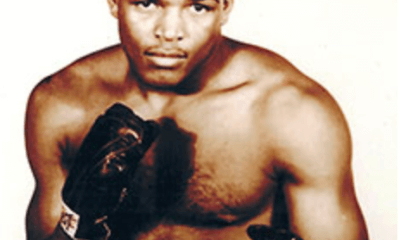
 Featured Articles3 weeks ago
Featured Articles3 weeks agoPhiladelphia Welterweight Gil Turner, a Phenom, Now Rests in an Unmarked Grave
-
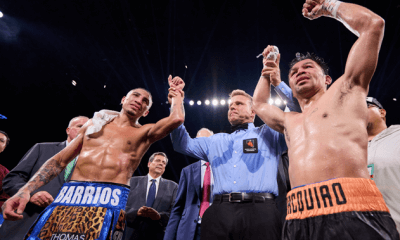
 Featured Articles2 weeks ago
Featured Articles2 weeks agoArne’s Almanac: Pacquiao-Barrios Redux
















